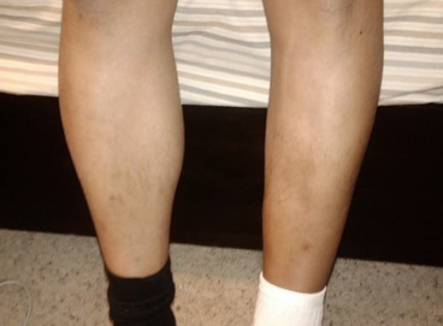Muscle atrophy is a condition where the muscles begin to break down from disuse. It begins by becoming unpleasant, but it can become more severe with time. Oftentimes this condition can be dealt with by increasing exercise.
Muscle atrophy begins by becoming unpleasant, but it can become more severe over time. It is essential to address this condition as it starts to take hold to prevent more serious conditions such as heart failure which can result from muscle wasting.
What is Muscle Atrophy?
Muscle atrophy is the loss or wasting of muscle tissue throughout the body. There are 2 standard ways in which this disease can form. The most severe kind of this disease is neurogenic atrophy, a disease caused when an injury or disease hurts the nerve which connects to the muscle. This damage can take place quite suddenly. The second kind of this disease is disuse atrophy which is triggered by a lack of physical activity. When your muscles are not used typically or motion is restricted, your muscles can be damaged. This is a substantial issue for those who are bedridden.
Causes of Muscle Atrophy
Disuse muscle atrophy is rather self-explanatory. Any inactive lifestyle that leads to very little exercise can promote muscle atrophy. The less muscles that are used, the more severe the concern for developing this disease is. This can also cause heart difficulty due to the fact that the heart is likewise a muscle which can begin to break down if it is not correctly exercised with restorative exercise on a regular basis.
Neurogenic muscle atrophy is brought on by the nerves connected to the muscle becomes damaged from something such as a stroke, Lou Gehrig’s disease or multiple sclerosis. When nerve damage to a muscle is interrupted so it can not get to the brain, peripheral nerves or the spine you may not be able to use the muscle appropriately. If the nerve is compressed due to an injury this can also lead to reduced blood flow to the nerve which can lead to the muscle breaking down and becoming harmed.
Symptoms of Muscle Wasting (Atrophy)
Weak and flabby muscle: The first sign that you are struggling with muscle atrophy is that the muscles will end up being weak and flabby. You may observe that the muscles on your body are not being in the same position that they used to or that your skin is beginning to stretch from the weight of the muscles hanging in a way that they did not formerly. You may likewise discover that it is ending up being challenging to perform workout routines, fundamental lifting or other jobs that you were as soon as able to carry out. In more severe cases, this might indicate that simple tasks such as sitting for a long period of time end up being harder, particularly when it comes to patients that are bedridden or have an otherwise exceptionally inactive lifestyle.

Damaged muscle: In the case of neurogenic muscle atrophy, you might see a stooped posture where the muscle has become damaged. This can be more difficult to notice at first, but the posture may become more noticable with time as the condition worsens. If something feels irregular, even if you are not aware of a major shift in your capability to stand upright or hold your body in its regular position, it may be worth having your condition looked at to guarantee that nothing is wrong. This is especially pertinent if you have actually recently struggled with an injury that could have had an impact on your nerves which connect to your muscles.
Pain and problem in moving: Patients may likewise observe that they have regular back pain or problem walking if they start to establish muscle atrophy. These can be an outcome of either type of the disease. Other symptoms such as ham string contractures, minimal variety of neck motion or rigid spinal column might begin to form as your condition becomes worse. A general stiffness or tough, heavy sensation when you attempt to move has actually likewise been described by patients. Some of these side effects may show up as you move, while others are internal so they can not be witnessed. It is very important to make note of whether or not you look in a different way and how you feel to identify if you might be developing muscle atrophy.
Heart failure: In more severe cases you may begin to develop heart failure from muscle wasting. As muscles end up being weaker it can end up being hard for your heart to pump as effectively, and it will eventually stop working from an absence of use. If your heart begins to race when you try to carry out physical activity or if it feels as though your heartbeat is labored and these symptoms are integrated with a general sense of weakness then you ought to look for treatment options for your condition immediately.
Treatments of Muscle Atrophy
In most cases, exercise can help reverse the impacts of muscle atrophy. In the case of severely bedridden patients, you might not have the ability to totally reverse the results of muscle atrophy, but you can help stop the damage which has been done to the body. If your condition is major it is very important to work with a doctor or therapist to develop a program that will not put excessive quantities of strain on your heart and damaged muscles.
Patients experiencing muscle atrophy triggered by nerve damage might need musculoskeletal adjustments in order to alleviate the pressure on the nerve which is causing the damage. This will help return the connection to the muscle so that you can begin to deal with the development of working the muscle back to its initial state. In the event that the nerve was damaged by an injury, deal with your doctor to make sure that you are performing exercises that will not exacerbate your condition.








